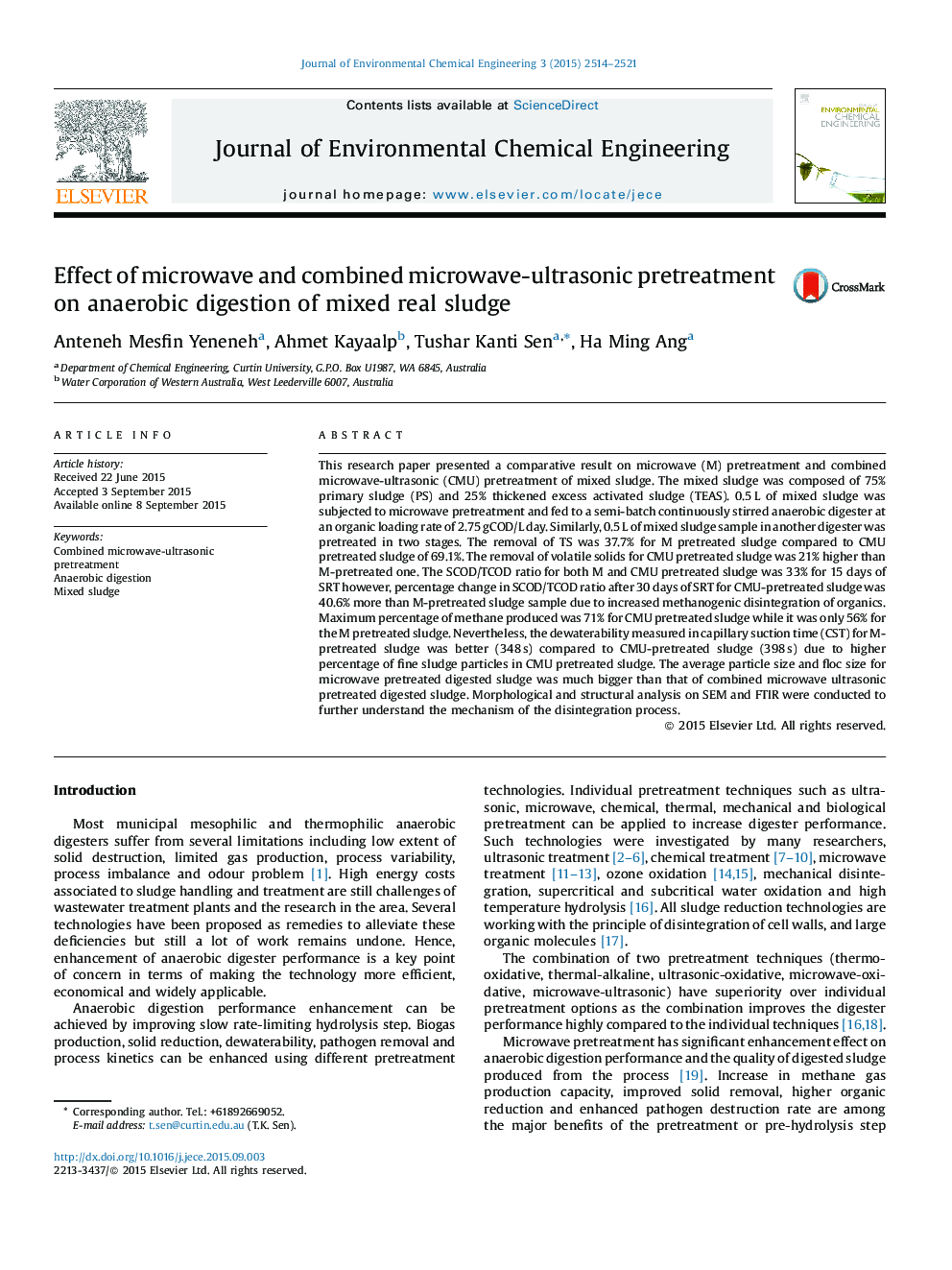| Article ID | Journal | Published Year | Pages | File Type |
|---|---|---|---|---|
| 222055 | Journal of Environmental Chemical Engineering | 2015 | 8 Pages |
This research paper presented a comparative result on microwave (M) pretreatment and combined microwave-ultrasonic (CMU) pretreatment of mixed sludge. The mixed sludge was composed of 75% primary sludge (PS) and 25% thickened excess activated sludge (TEAS). 0.5 L of mixed sludge was subjected to microwave pretreatment and fed to a semi-batch continuously stirred anaerobic digester at an organic loading rate of 2.75 gCOD/L day. Similarly, 0.5 L of mixed sludge sample in another digester was pretreated in two stages. The removal of TS was 37.7% for M pretreated sludge compared to CMU pretreated sludge of 69.1%. The removal of volatile solids for CMU pretreated sludge was 21% higher than M-pretreated one. The SCOD/TCOD ratio for both M and CMU pretreated sludge was 33% for 15 days of SRT however, percentage change in SCOD/TCOD ratio after 30 days of SRT for CMU-pretreated sludge was 40.6% more than M-pretreated sludge sample due to increased methanogenic disintegration of organics. Maximum percentage of methane produced was 71% for CMU pretreated sludge while it was only 56% for the M pretreated sludge. Nevertheless, the dewaterability measured in capillary suction time (CST) for M-pretreated sludge was better (348 s) compared to CMU-pretreated sludge (398 s) due to higher percentage of fine sludge particles in CMU pretreated sludge. The average particle size and floc size for microwave pretreated digested sludge was much bigger than that of combined microwave ultrasonic pretreated digested sludge. Morphological and structural analysis on SEM and FTIR were conducted to further understand the mechanism of the disintegration process.
